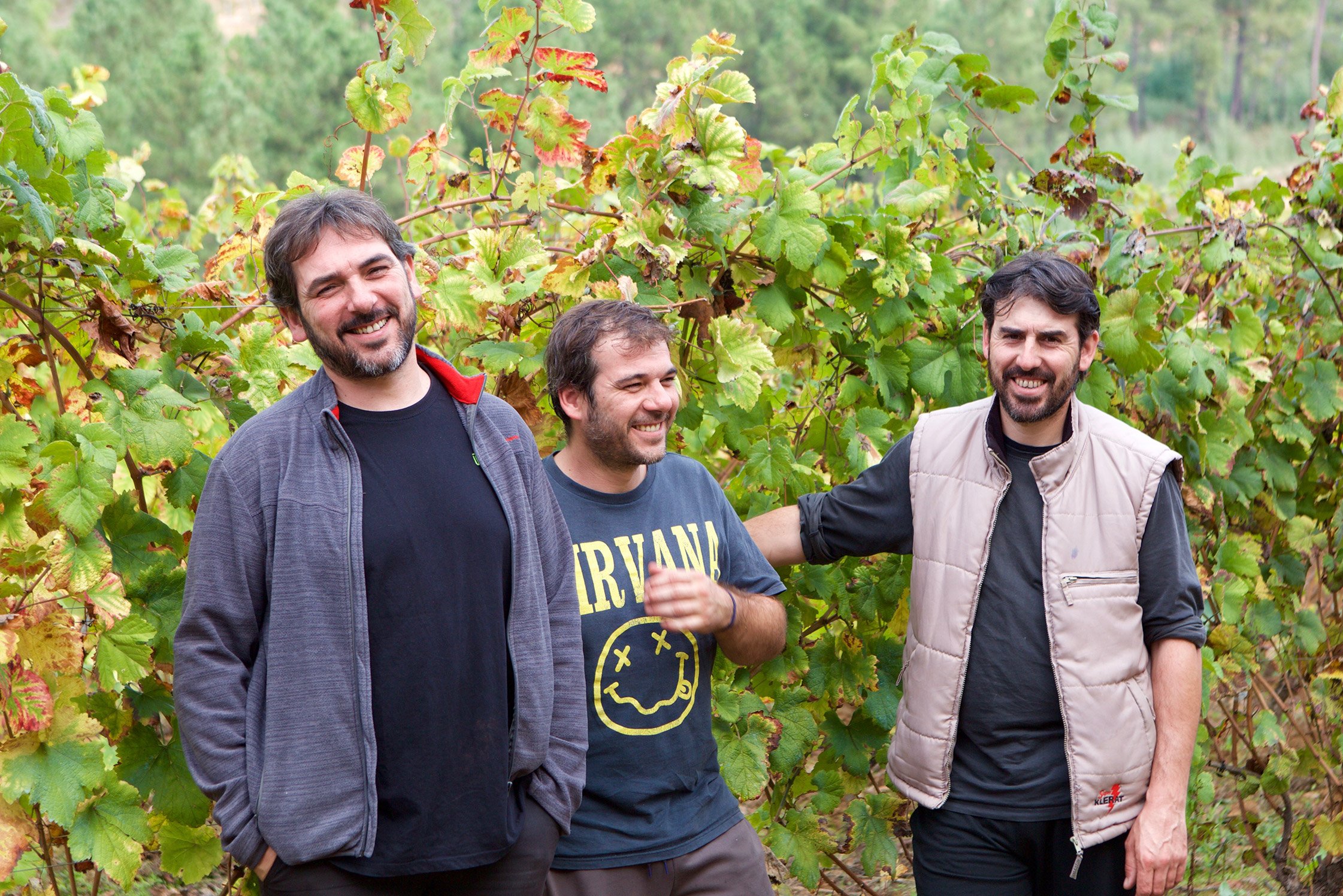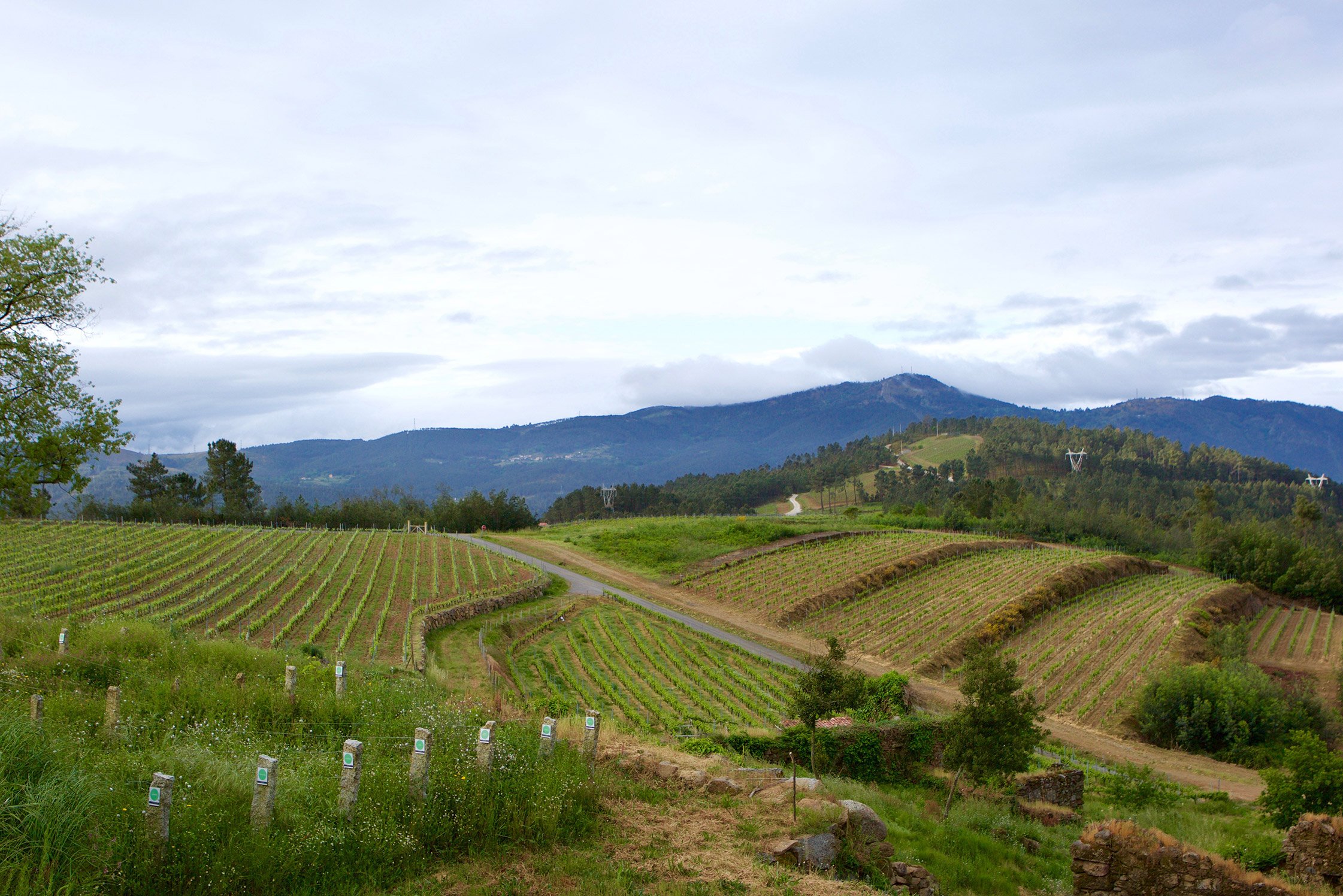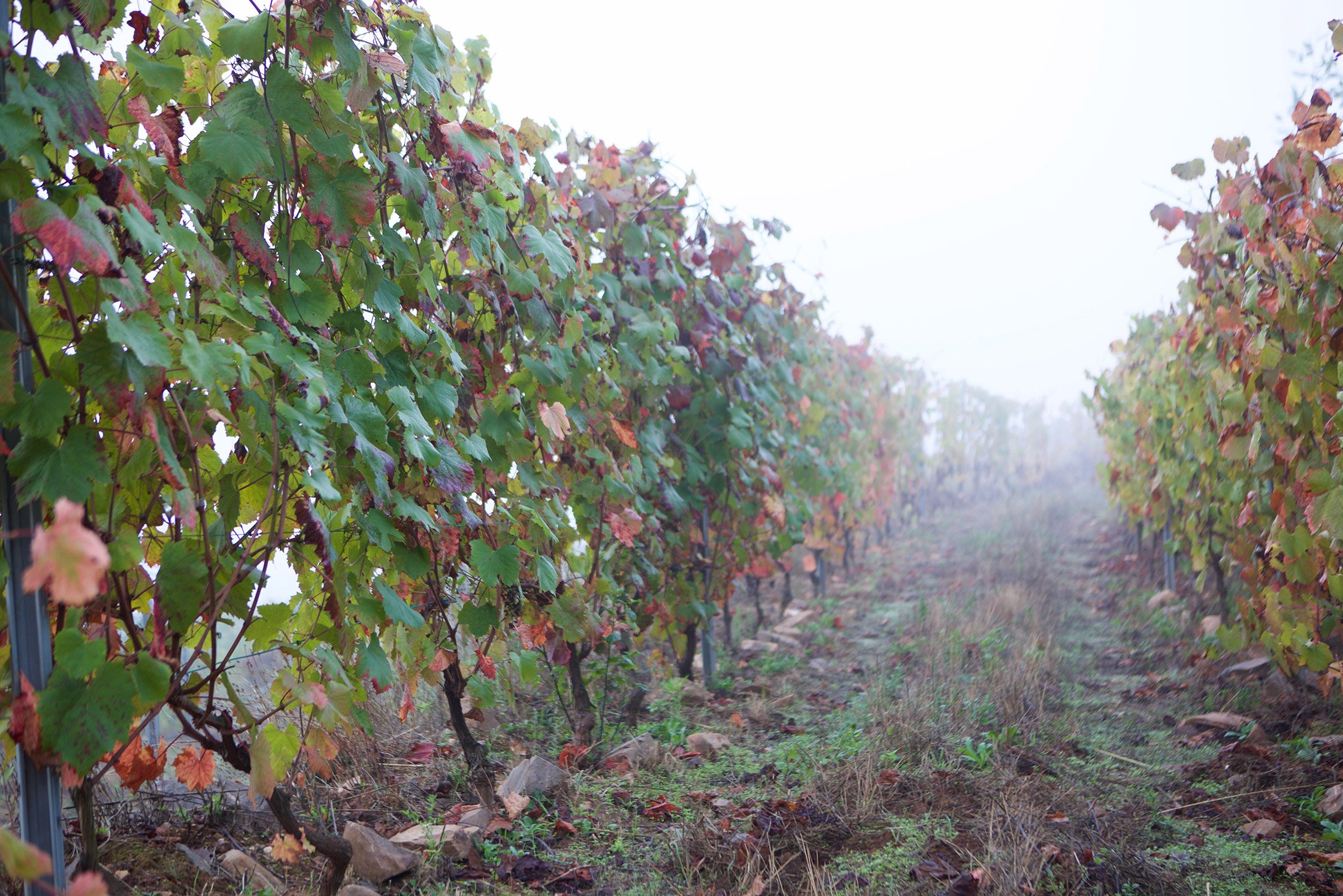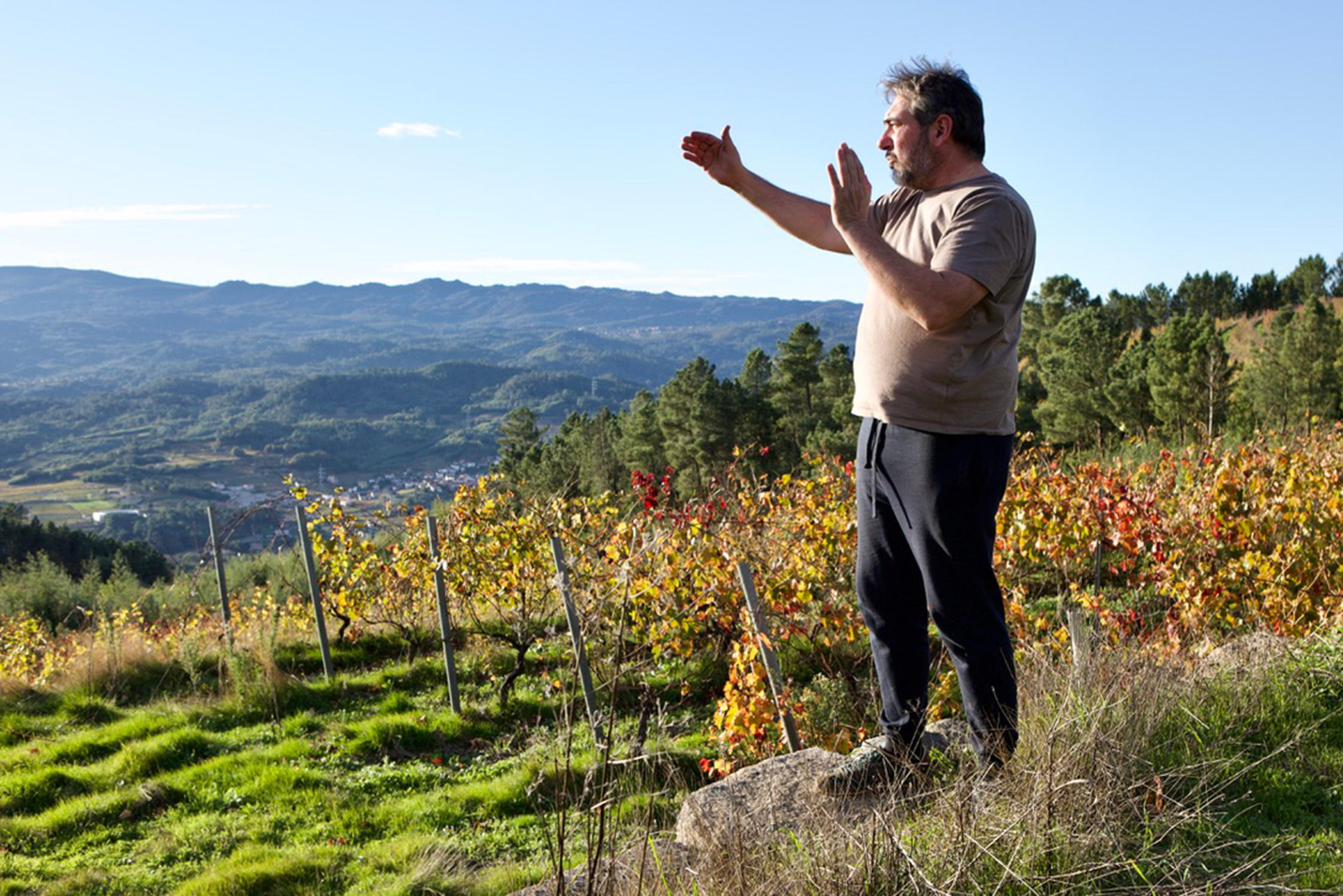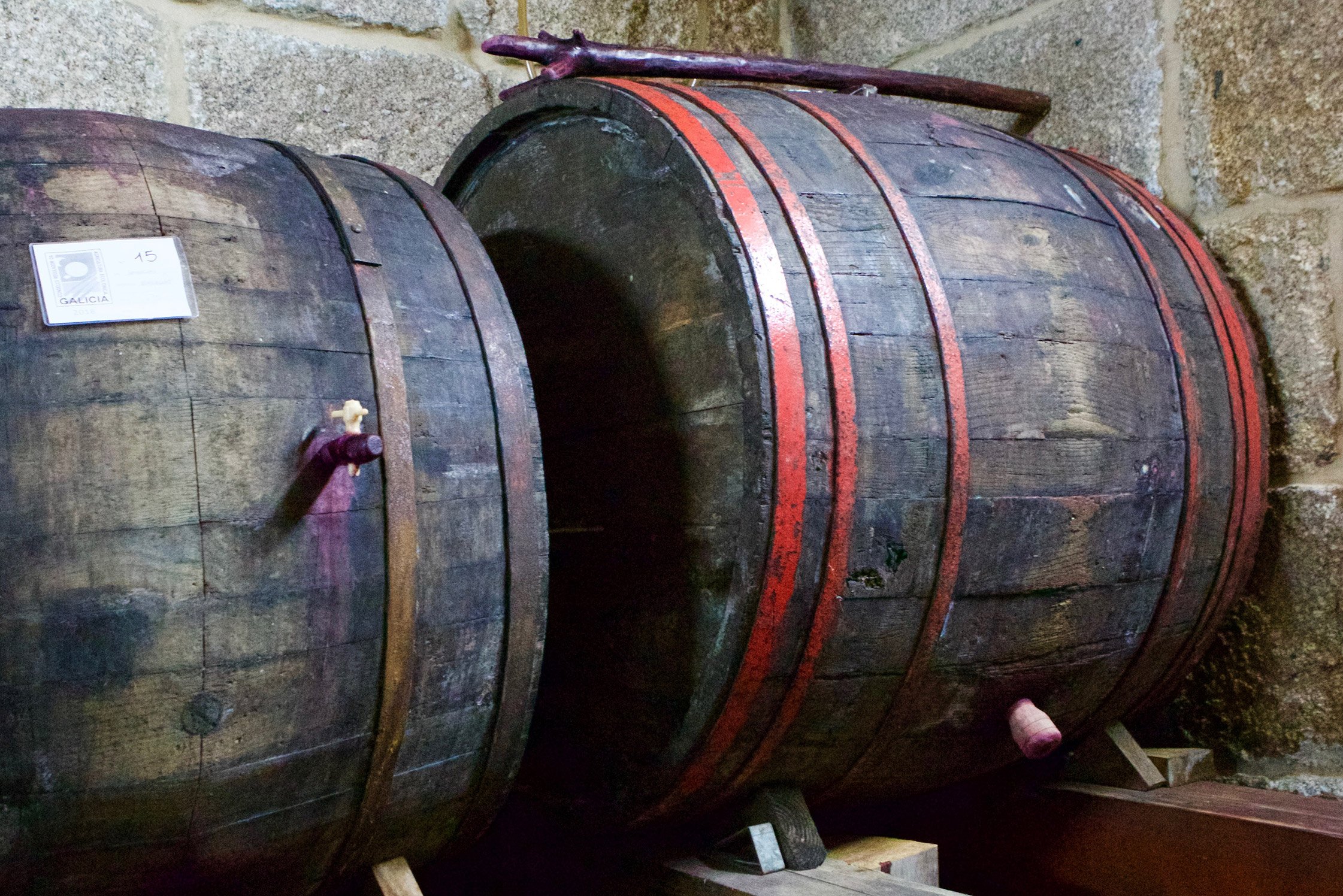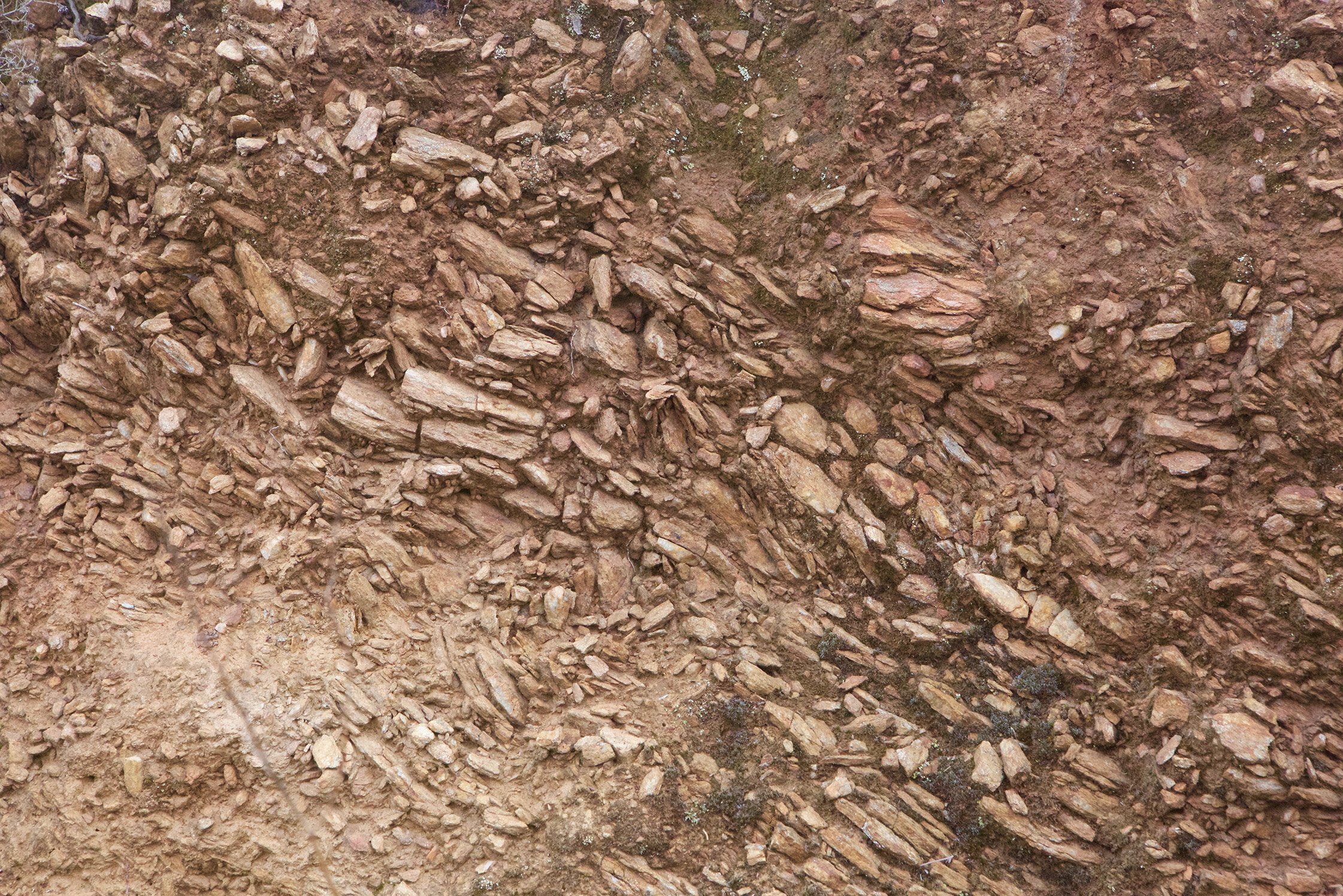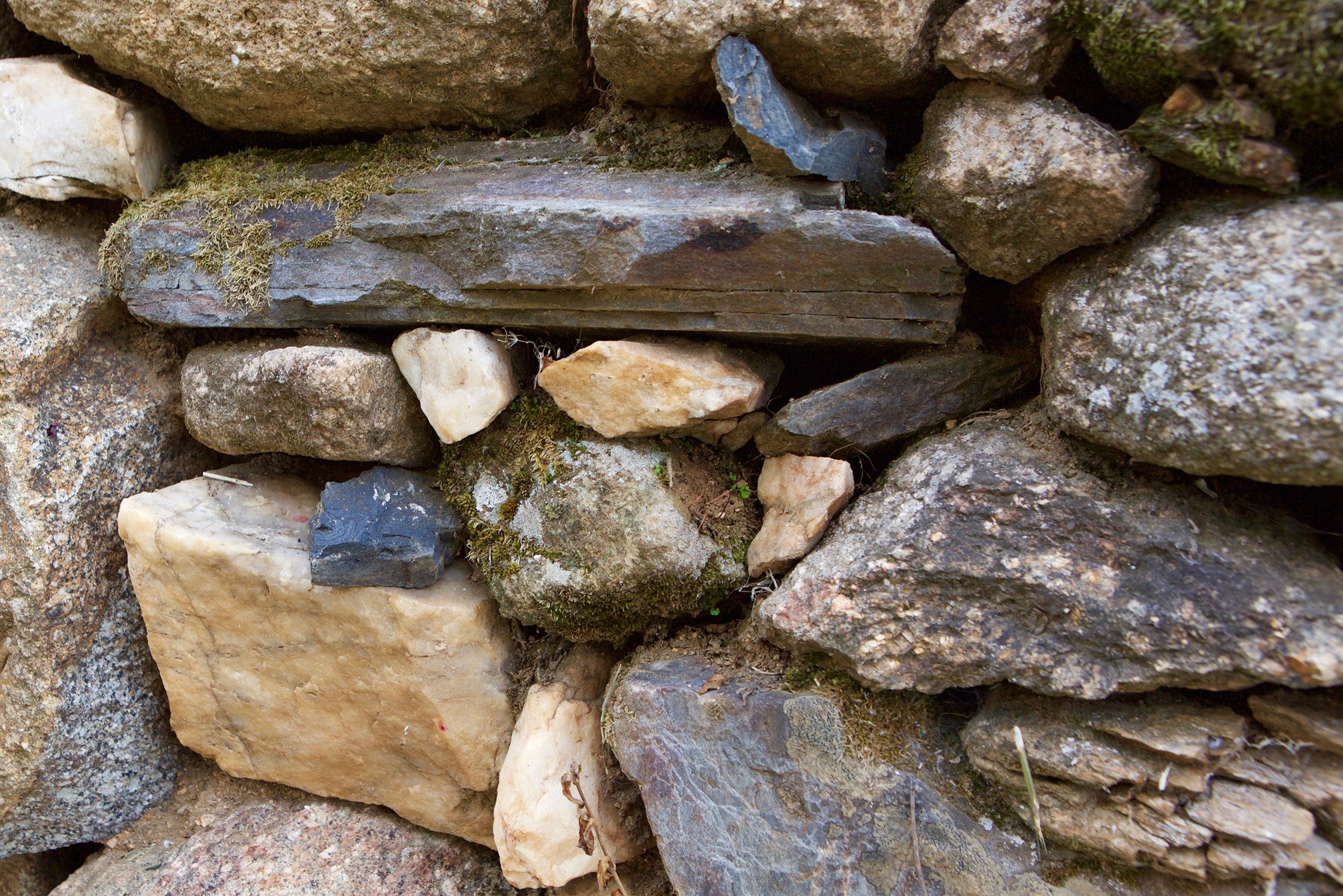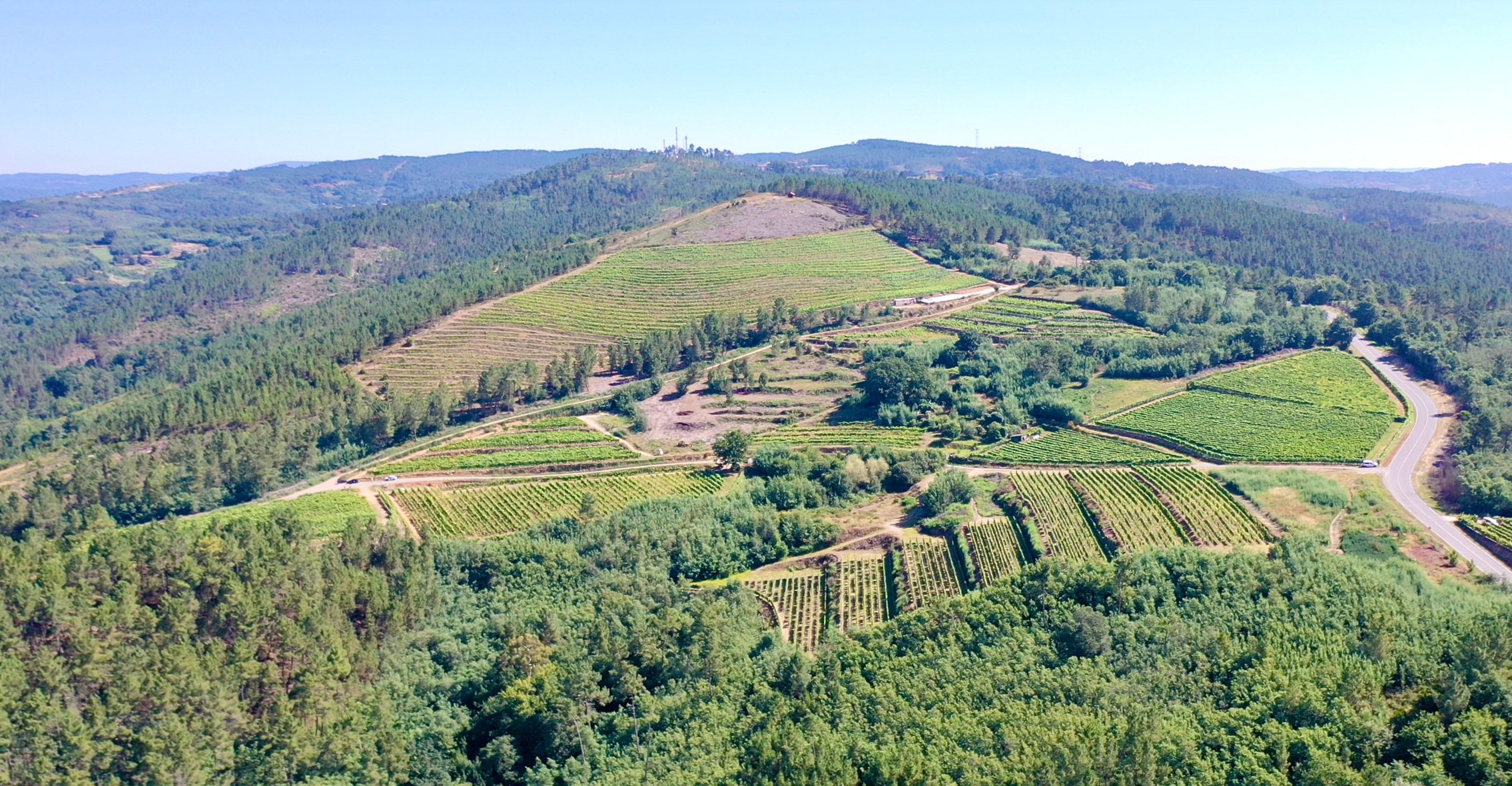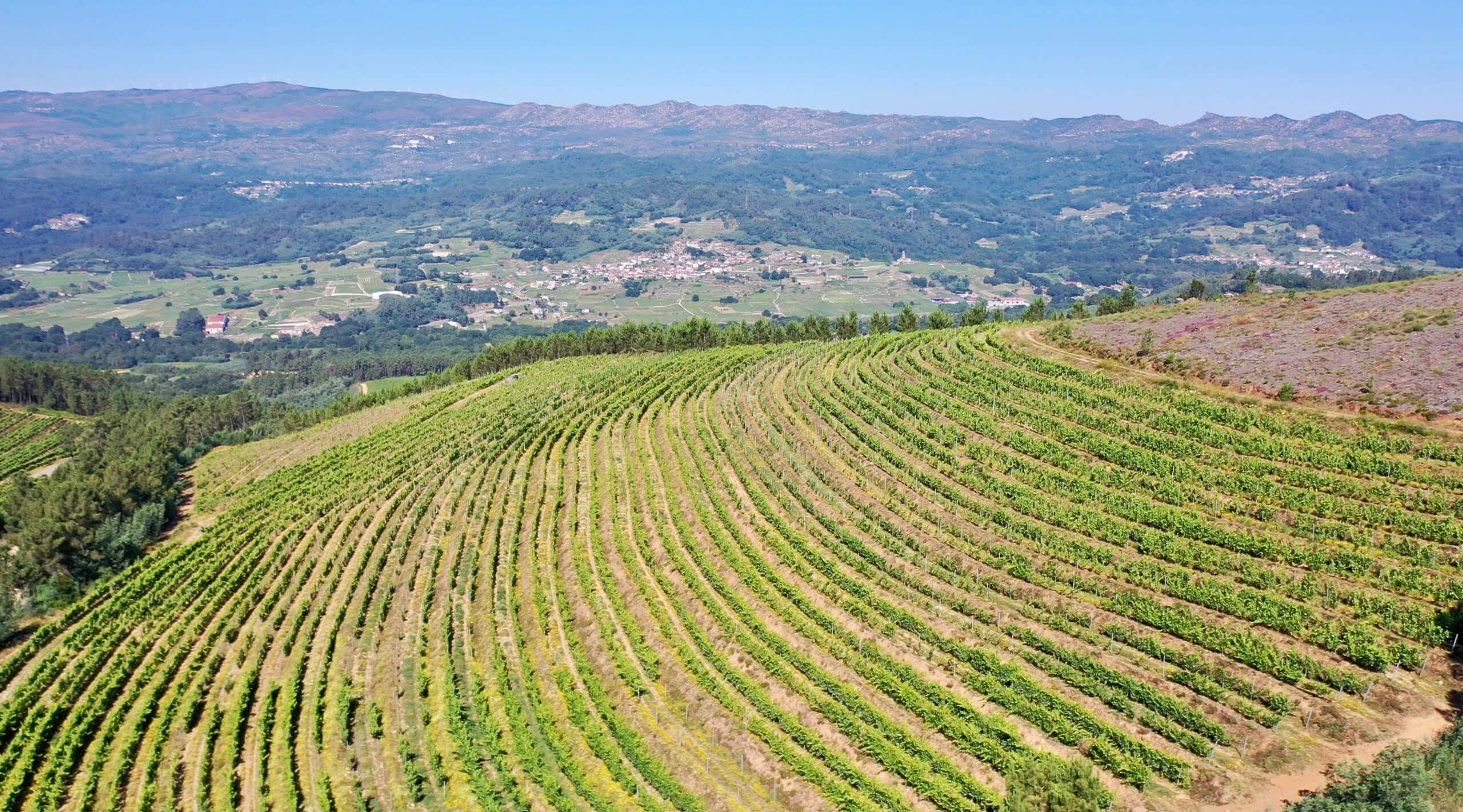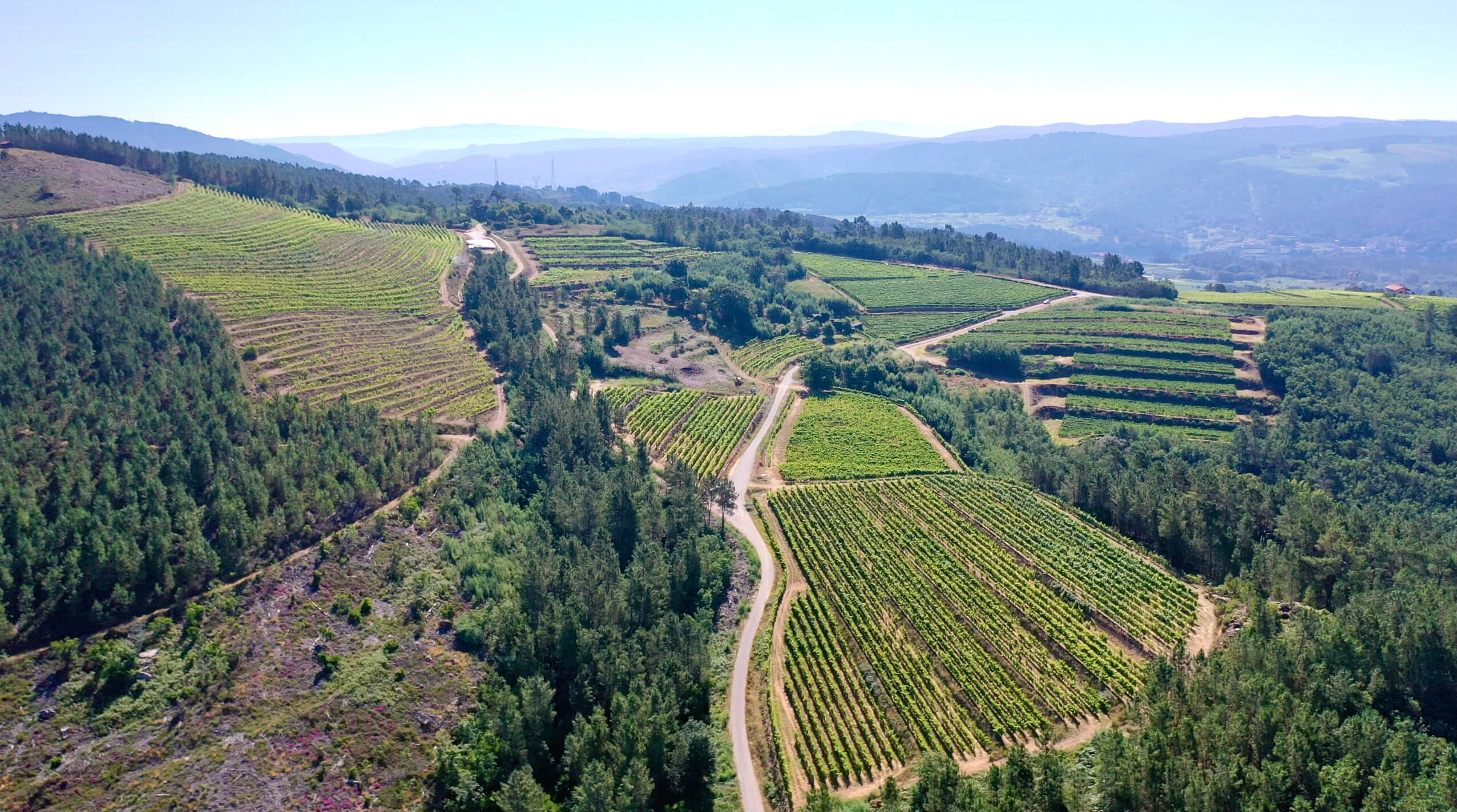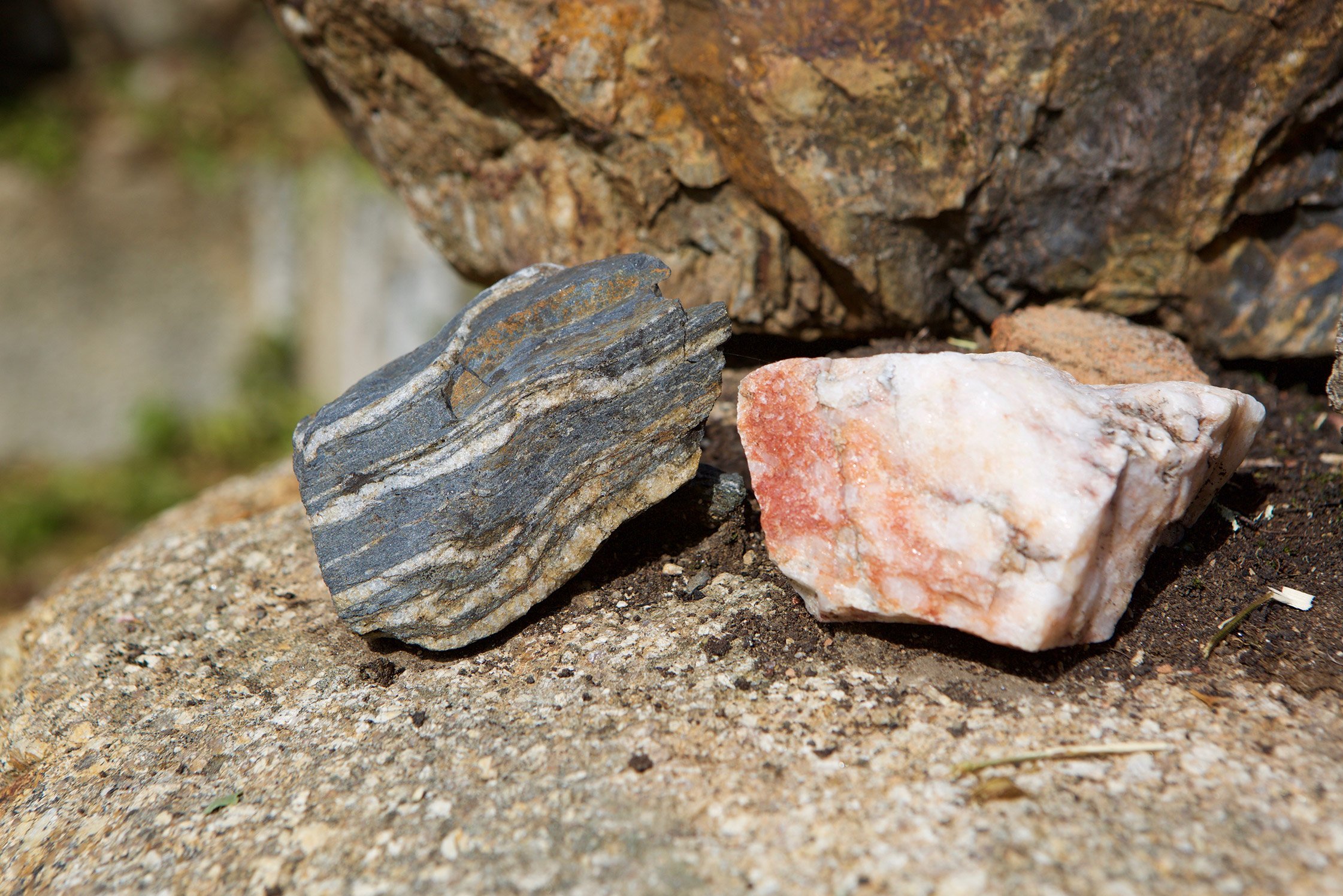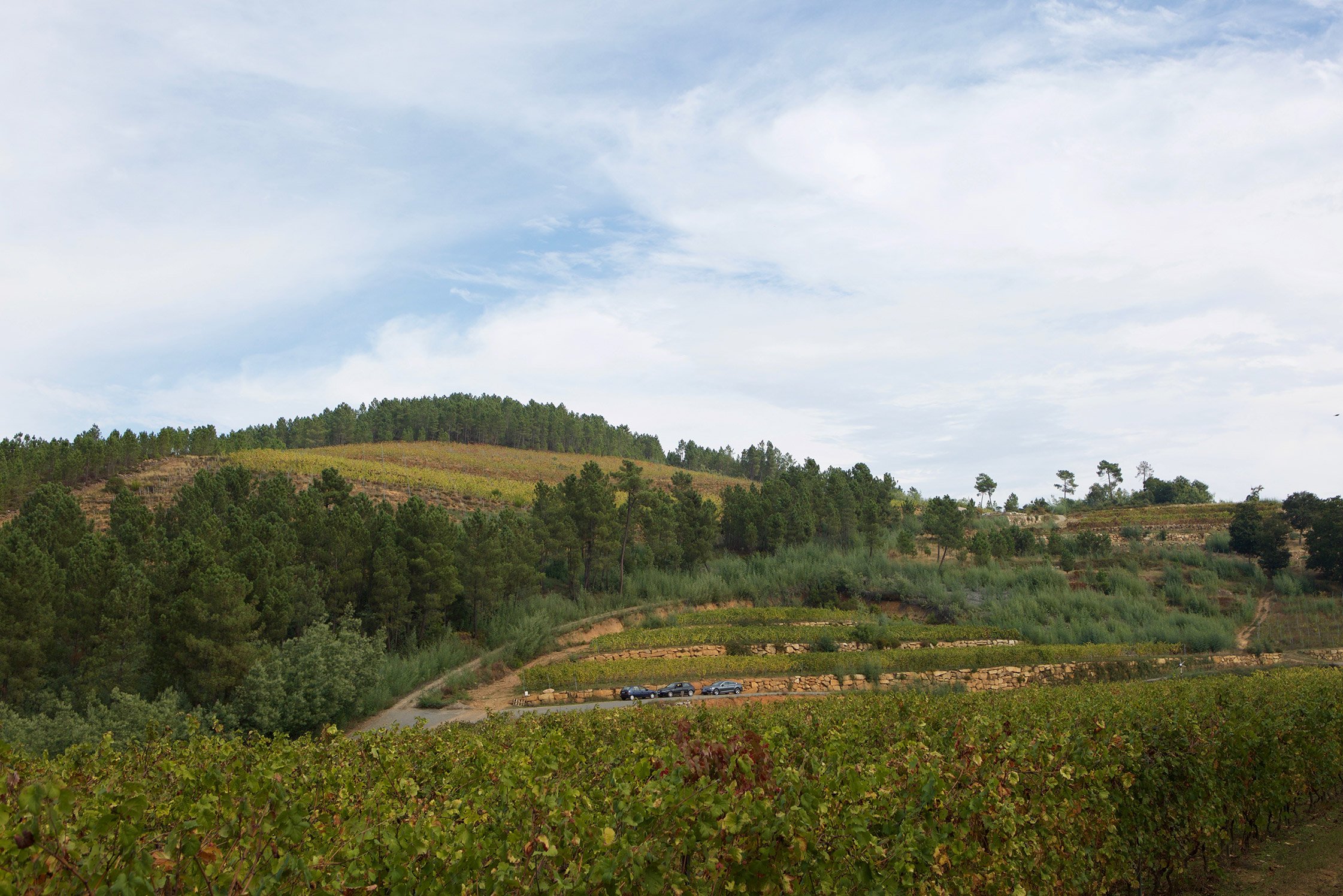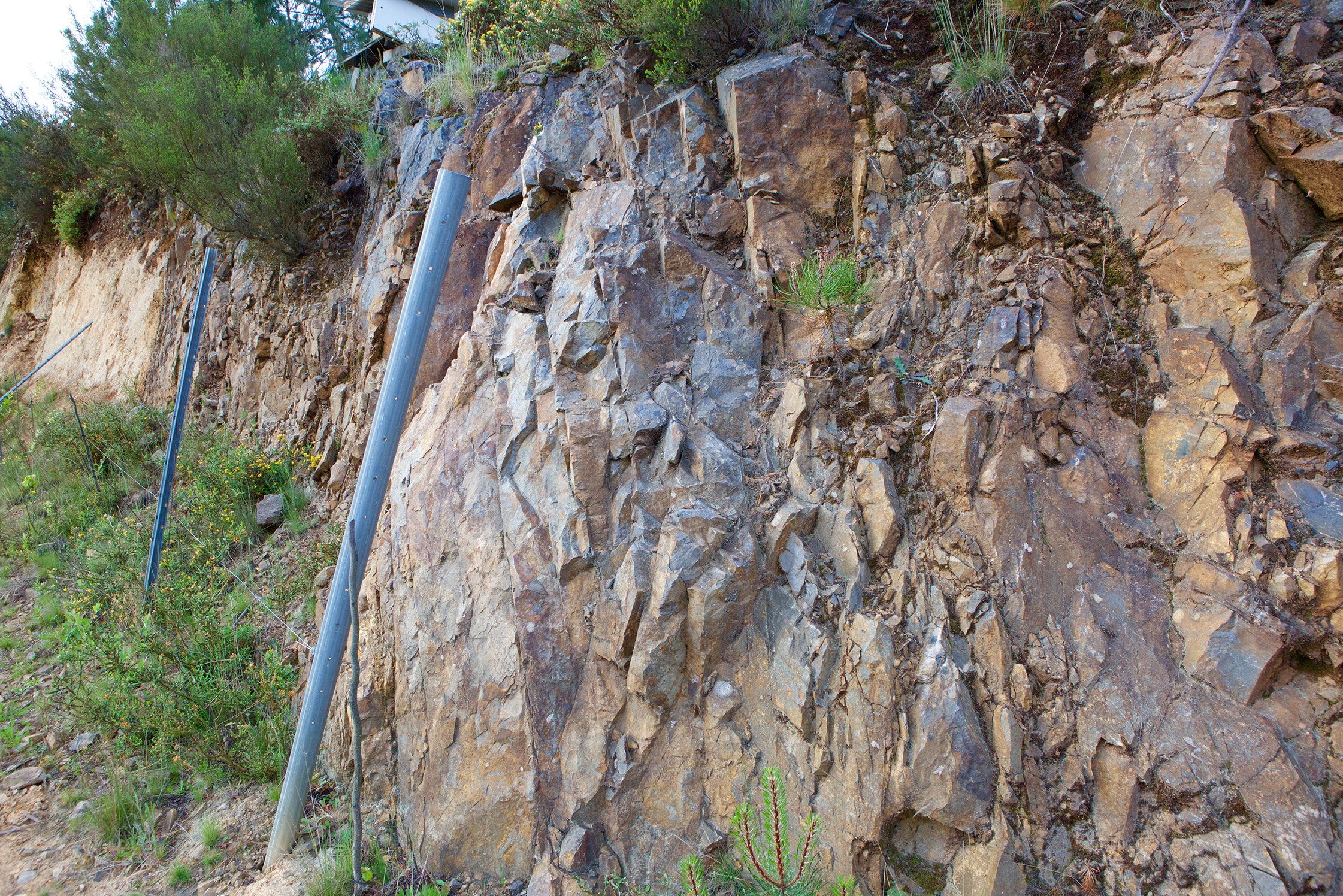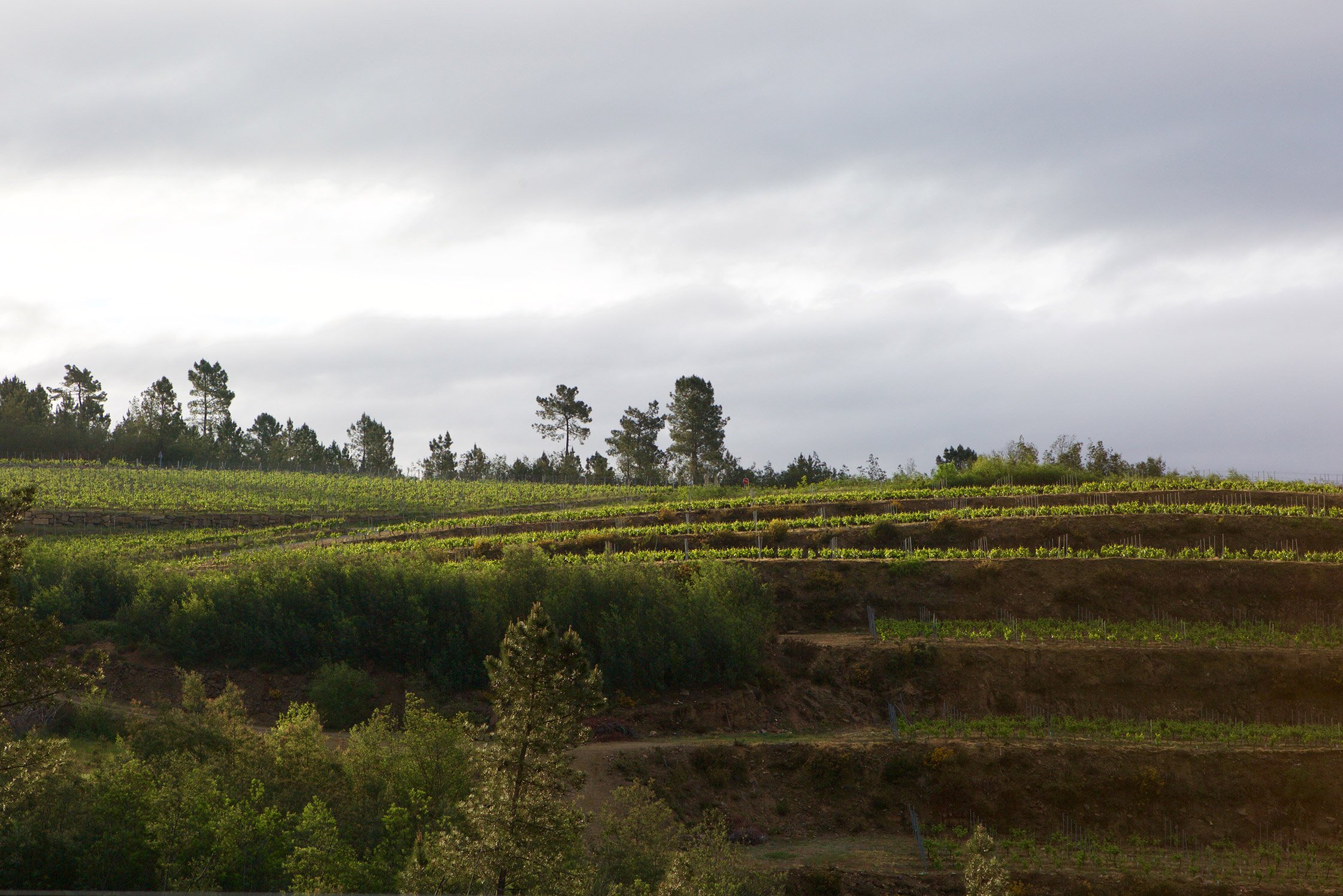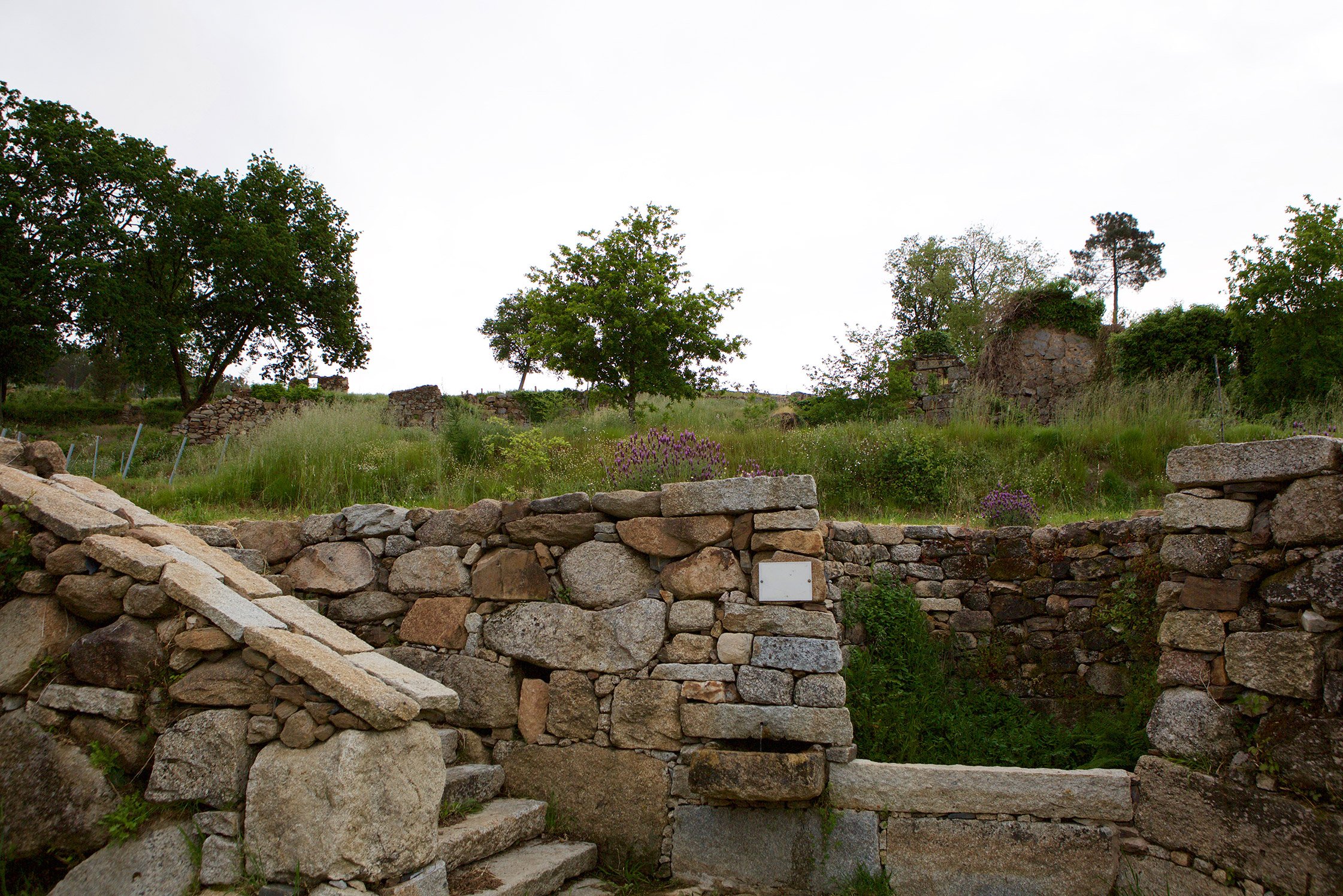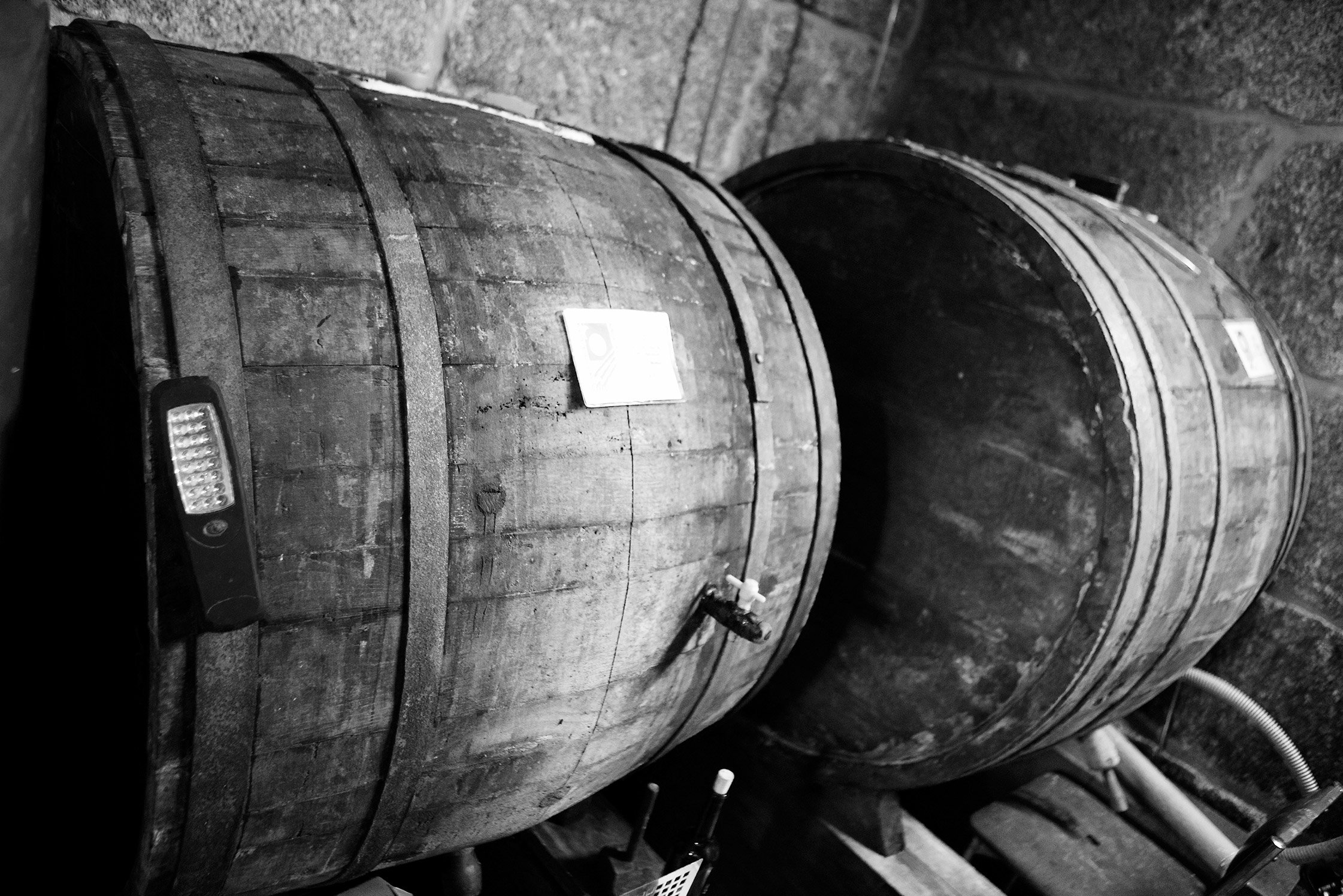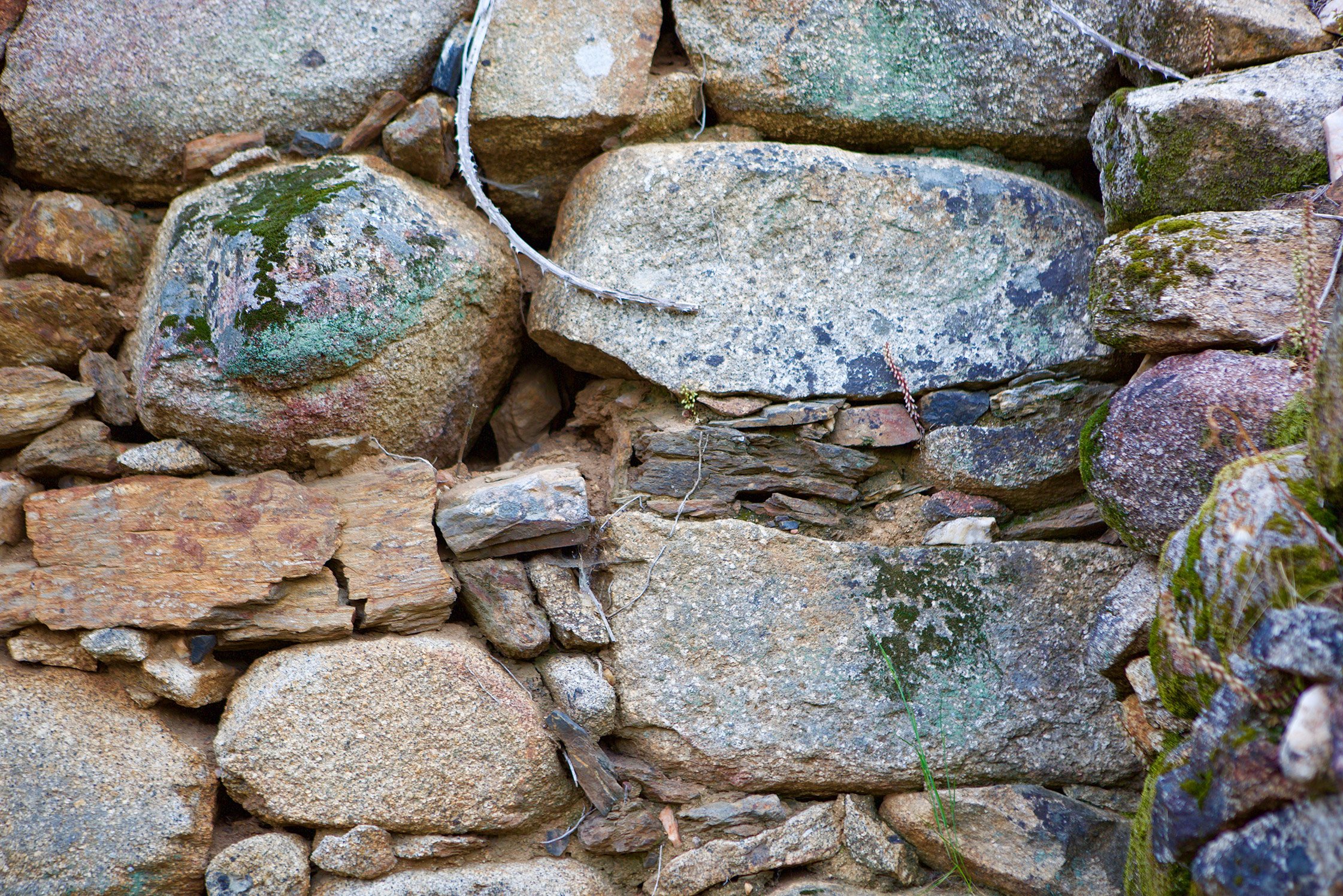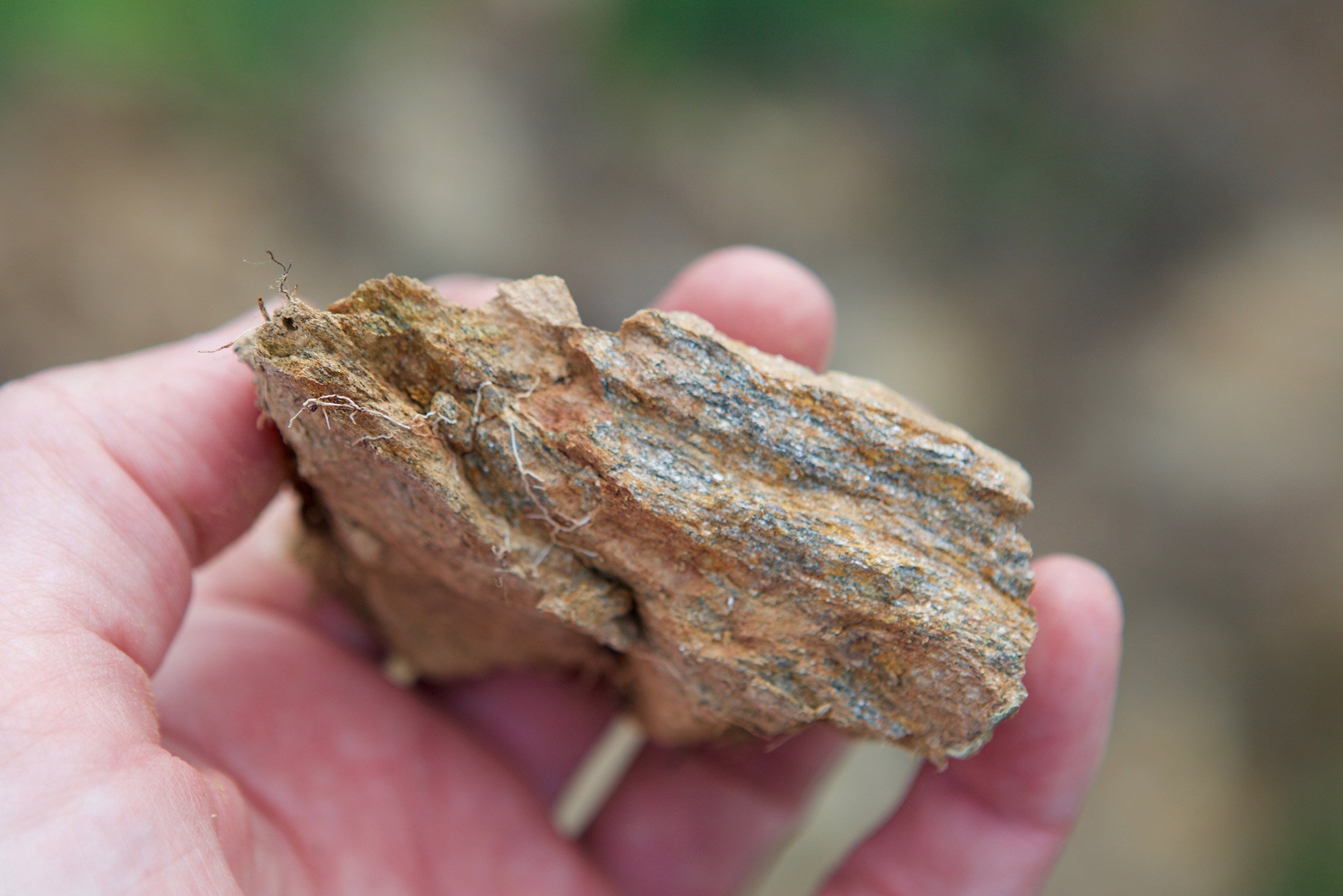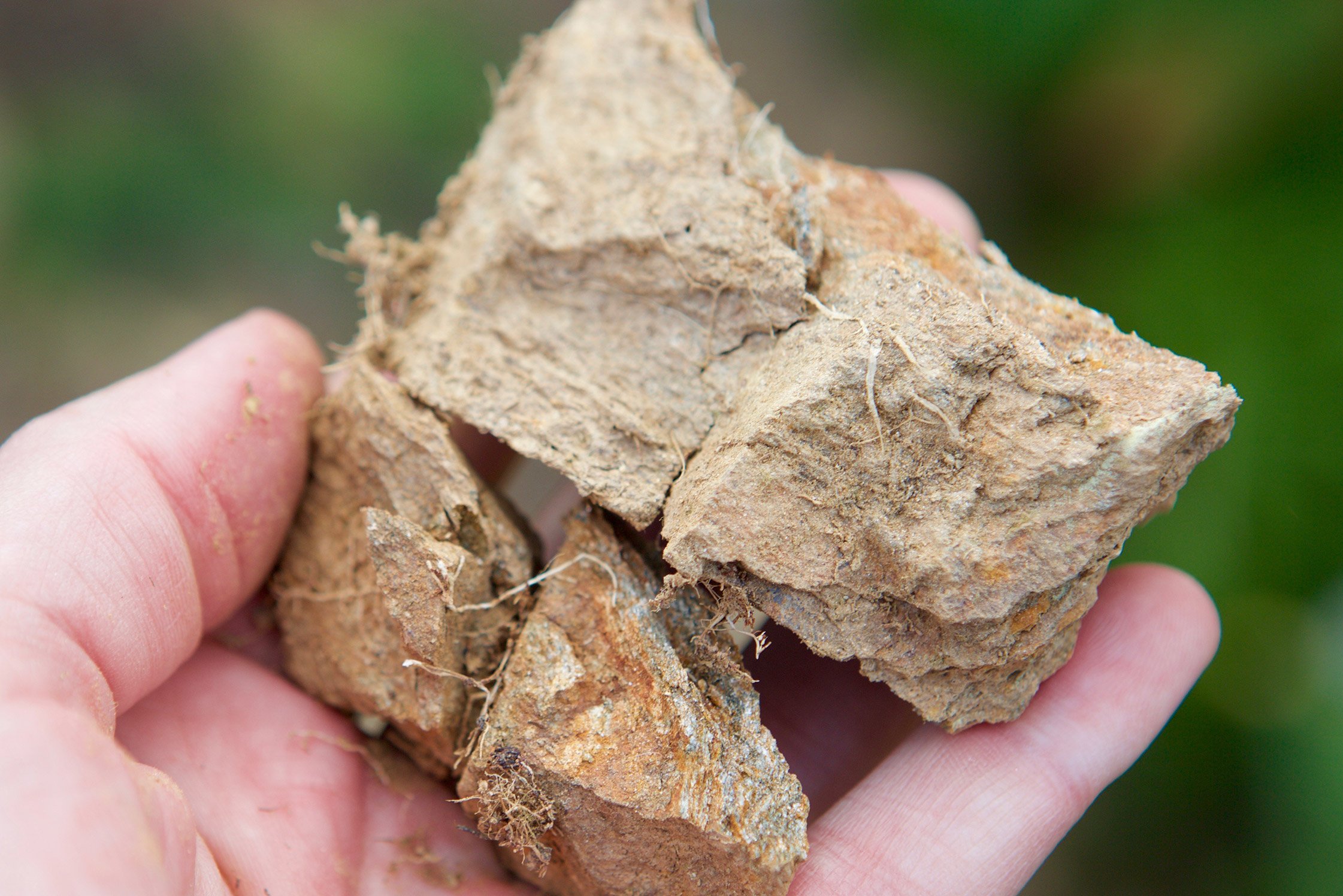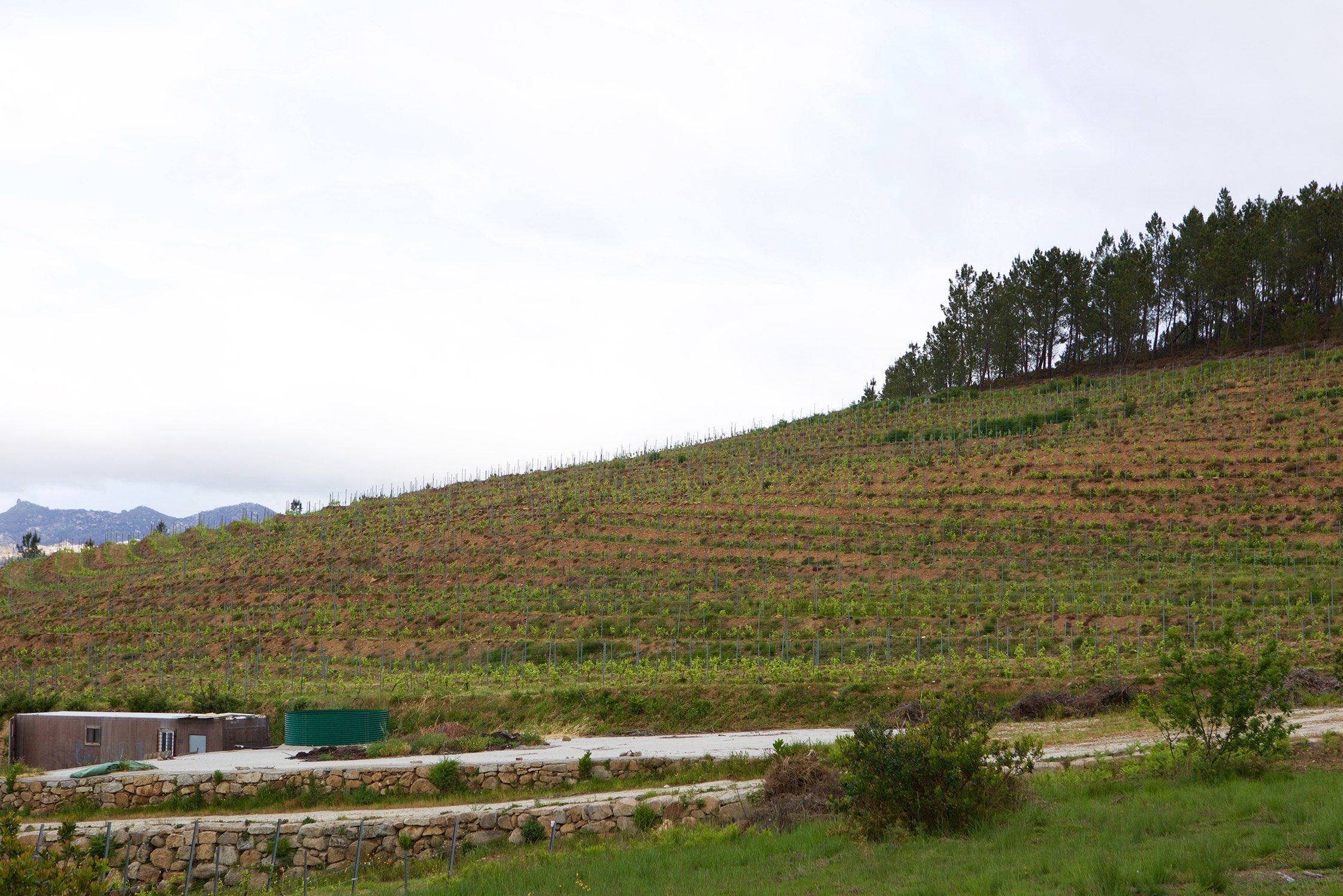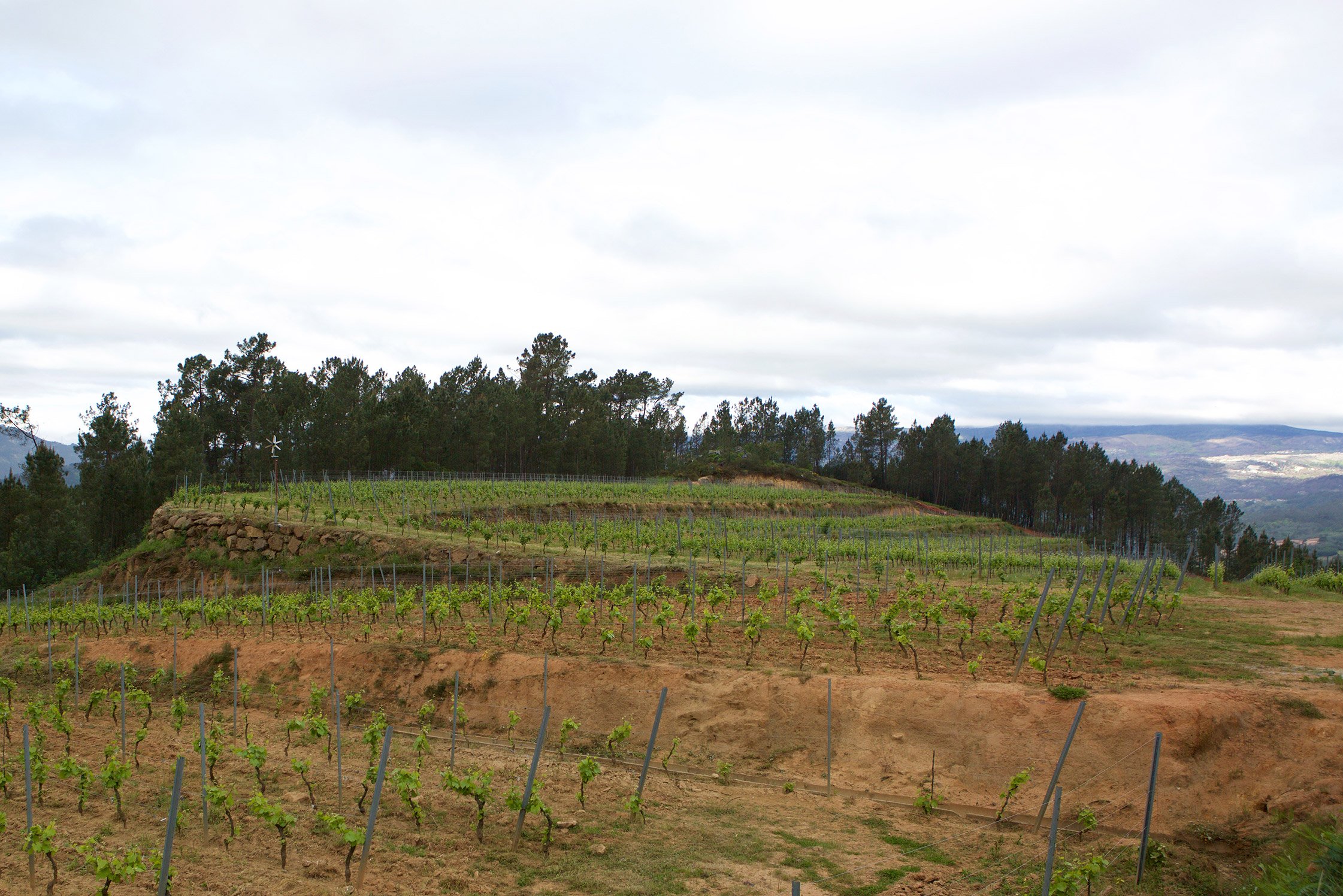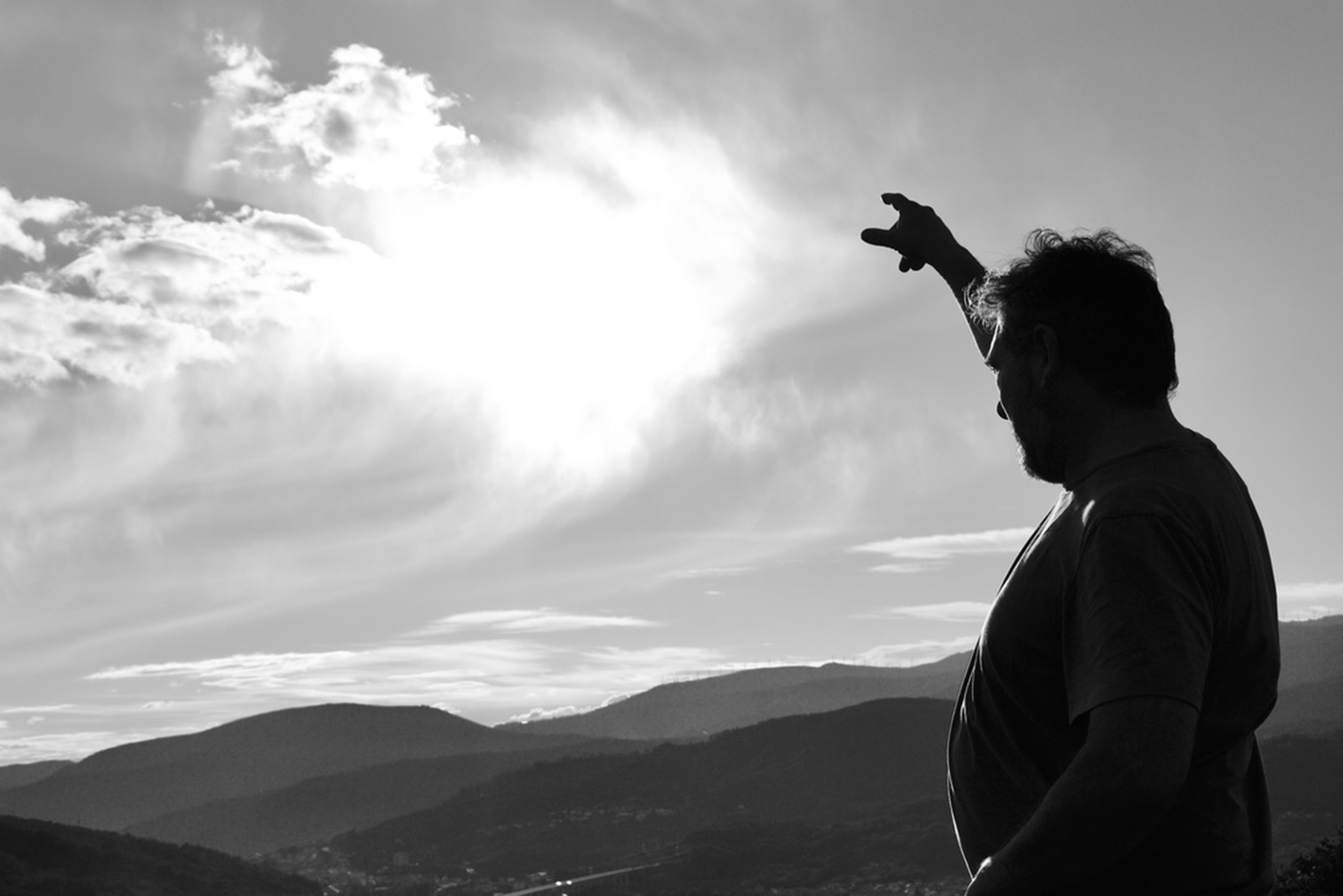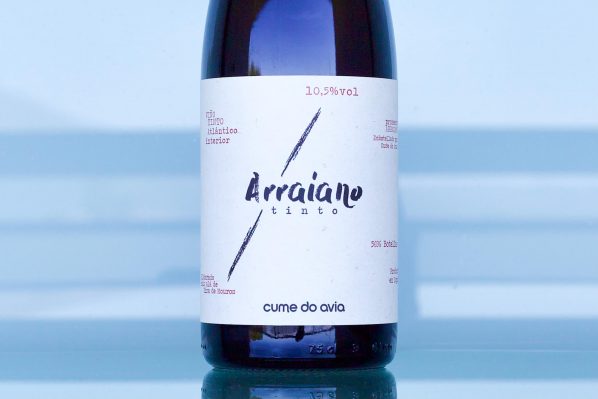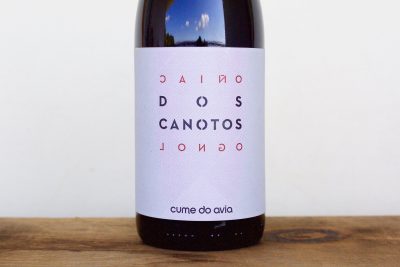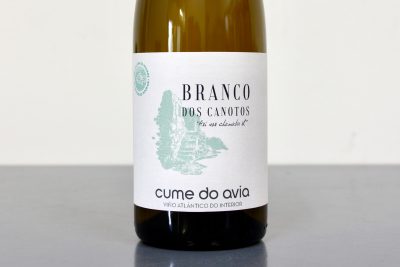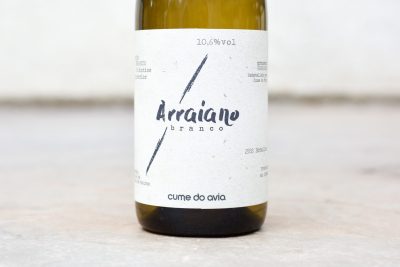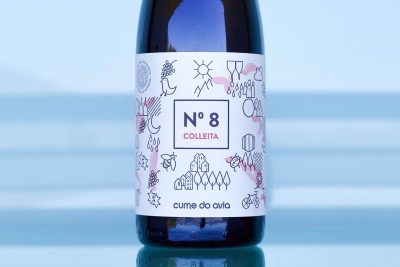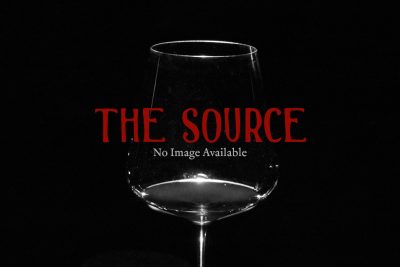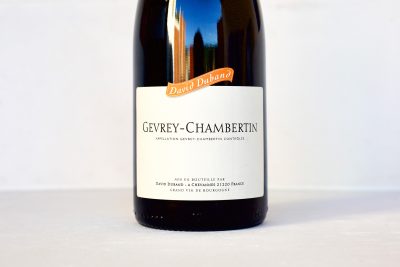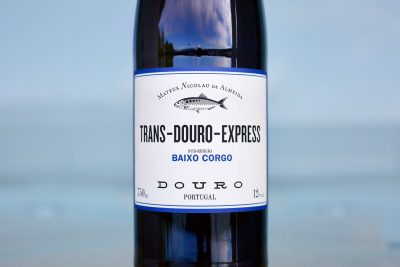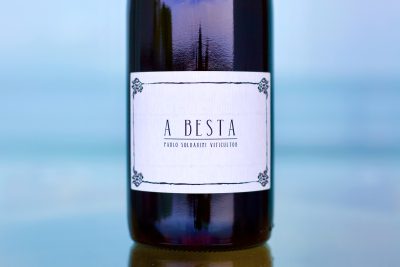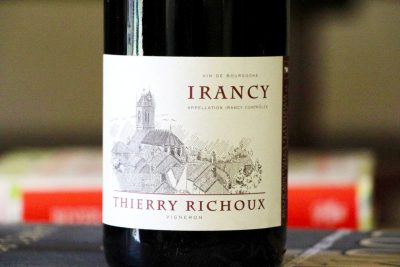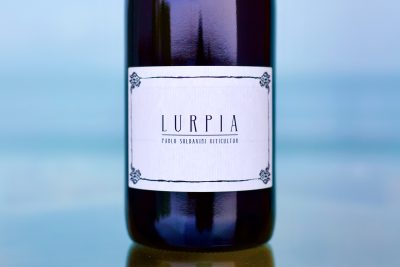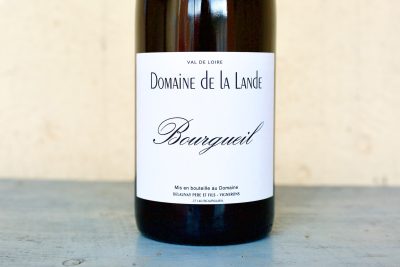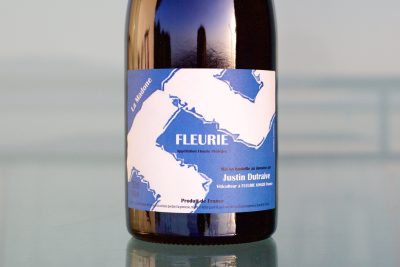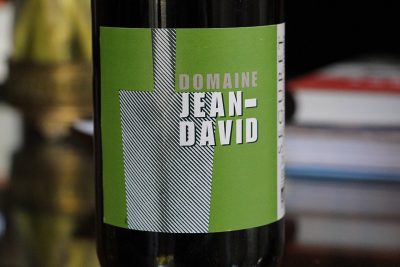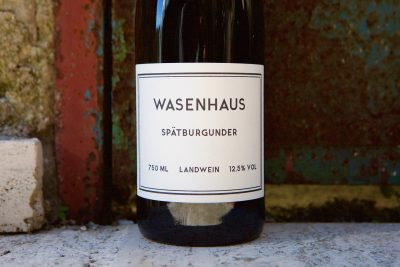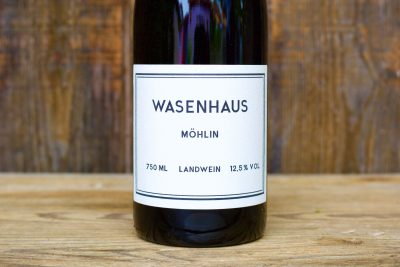Cume do Avia
This website contains no AI-generated text or images.
All writing and photography are original works by Ted Vance.
Short Summary
East of Spain’s Rías Baixas lies the Ribeiro D.O., one of the country’s most historic wine regions internationally known for both red and white wines for nearly a thousand years. Here, a band of idealistic young brothers and cousins left city life to reclaim their family’s abandoned land, Eida de Mouro, and recapture their family’s ancient history. Their label, Cume do Avia, began nearly two decades ago, and their geologically complex mountainside vineyards are composed of granodiorite, schist, slate, and gneiss bedrock, clay and sand topsoil, and have nearly twenty indigenous grape varieties planted with ancient massale selections and overlook the Avia and Miño Rivers. They bottle single variety and blended wines of intense freshness, detail, and authenticity, with the reds led by the graceful queen of Galician red grapes, Brancellao, along with the unstoppably vigorous Caíño Longo, and the ink-black and deliciously savage Sousón. Their whites are led by soft Treixadura, with a supporting cast of high-acid varieties, like Albariño, Lado, and Loureiro.Full Length Story
We first met Diego Collarte on an unnamed road outside of Ribadavia, in Spain’s Ribeiro wine country. As Cume do Avia’s ringleader and instigator, he’s the one who claims responsibility for the “completely irrational decision” his clan made fifteen years ago.
Diego and his brother, Álvaro, grew up in Vigo, northwestern Spain’s largest metropolitan and industrial area. The bustle of city life wasn’t in their blood, so in their early twenties they embarked on the courageous restoration of vineyards in an ancient Galician ruin where their ancestors once lived. “I was not interested in material things. I only wanted to be satisfied with what I do,” Diego explained.
Diego (left), Álvaro (center) and their cousins, Fito (right) and Anxo (perhaps hiding somewhere in the vineyards), started their new lifelong adventure together in 2005. As Diego says, “we put our youth into the project,” one that ultimately pushed them to the brink of financial ruin and tested their relationships with each other and many of their loved ones. Three of the four would eventually have to find supplemental work to keep things afloat while waiting for the tide to turn in their favor. Today, their fortune is on the upswing due to a series of wines with the 2017 vintage that began to turn heads, including ours.
In 1942, their grandparents abandoned their land, known as Eida de Mouros, so named after mythological elves who safeguarded local knowledge. Dense with trees and underbrush, the property sits on the top of a hill (a Cume) above the river Avia, and was reestablished in 2005. With no family wealth, they took out loans to buy heavy machinery (which none of them had ever used before) and began to carve out the land. By 2008 they planted their first vines, and in 2012 finally made their first vinification “tests,” as Diego calls them; it was the first time any of them had ever made wine.
They planted thirteen different indigenous Galician varietals selected from ancient vines in the Ribeiro, with plans to plant many more. “The past of these forgotten grapes has been erased, leaving no one to discuss the ideal practices for them. Much knowledge was discarded with the introduction of chemicals to the vineyards after the second World War and there is no manual or record. We are trying to reinvent and rebuild this lost history,” Diego explained.
Their makeshift winery is a five-minute drive down the hill from their vineyards, in their grandparent’s garage. There’s very little room to move in the cramped little space where they tediously vinify and bottle each grape varietal separately to see how their vineyard’s diverse soil types influence smell and taste. With over twenty different lots, most barely enough to fill a barrel, many are aged in restored chestnut with over a hundred years of age.
Diego candidly told me that their early wines were inconsistent and it wasn’t until 2015 that they began to find more enological stability and a clear direction in the cellar. The cloud of doubt and anxiety began to lift and they were finally on their way to a breakthrough after more than a decade. Then a virtual plague of mildew arrived (not uncommon in these parts) and wiped out nearly their entire 2016 vintage, leaving their morale in tatters and their finances in dire straits.
Enter 2017.
The most beguiling wines give the impression that you’ve never truly fell in love like you just did with the wine currently in your glass. The wines we first tasted out of barrel in their cellar with Diego seemed to carry the magnitude and desperation of their collective dream—I’ve never been so moved by the energy of a moment as I was the day I met him and heard his unfiltered, brutally honest view into their challenges. The grit and heart-filled determination of this tribe has led to a range of red wines in 2017 that are raw, honest and inspiring. With the 2018 vintage, their whites took a significant jump that nearly levels the playing field with the reds.
Brancellao, a grape that can render a wine as brightly hued as a glass of Campari is the most seducing and elegant in the range. Caiño Longo can be a bright red when picked less ripe and quickly take on a darker hue with only a little more time on the vine; in either case, it charges with an unstoppable vigorous energy. (Further below are more in-depth perspectives on Caíno Longo and Brancellao.)
Their other red grapes, like the ink-black Sousón and Ferrón are animal and earth, and veer toward power, grit and almost savagery when young. All the wines’ aromas are intensely perfumed and have a mouthfeel full of tremendous freshness and intensity. Cume do Avia’s range of red wines is a unique and exciting addition to the resurgence of the Iberian Peninsula’s many sleeping wine giants.
Aside from the sentimental reasons for seeking their ancestral heritage as the starting point for their dream, there were also technical ones that play to the exceptional quality of their wines: the proximity of the land to the Atlantic; the south and west-facing orientation to maximize the sun’s heat in an otherwise cold region; the richness of the diverse soils, and the constant whistle of fierce winds that bring in fresh air and help grapes to stay dry and pest free. It’s an ideal place within this lush green landscape for their organic and biodynamic practices, extremely difficult tasks in the Ribeiro, a region Diego lovingly refers to as a “paradise for fungus.”
(See a 3D map of the vineyard here. The vineyards are only to the left of the main road.)
In a land mostly known for granite, the diversity of soils in their vineyards adds great breadth to their wines, filling the gaps where granite alone can fall short. From one meter to the next, their vineyard soils can quickly change from granite to schist to slate—three of the greatest soil types that exemplify the concept the French refer to as a vin de terroir. The soil grain is equally diverse and randomly shifts back and forth between sand and clay, bringing even more range of palate textures and weight. Some soils are dark orange, white or brown, depending on the mineral makeup. Within only nine hectares (twenty-two acres), it’s an extremely diverse plot of land.
The Ribeiro is better known for white wine, and while Cume do Avia has really stepped up their game in that department, it’s the reds that bring a greater thrill of discovery. The revelation when tasting them is in how they manage to be angular and vertical while remaining strong and somehow full on all sides of the palate. They all carry a decisive full frontal attack, weighted mid-palate and a long, textured mineral sharp finish. Many wines grown solely on granite tend to front-load in the palate, leaving the mid and back-palates behind in their potency; regions like France’s Northern Rhône Valley, Corsica and Muscadet often demonstrate this characteristic.
Schist and slate seemingly weight the scales in the opposite direction as granite and drill deep into the mid and back-palate, making the combination of these soil types within one wine extremely complex and on par with limestone terroirs that seem to carry a fuller mouthfeel in general by comparison to granite, slate and schist as single bedrock terroirs. The result is wines that manage to be both concentrated and lithe at the same time. They rest on the palate like a mouthful of small steel weights rather than with a dough-like density.
There are no fertilizers or soil amendments in the vineyards, which keeps the wines as true and pure as possible, and prevents them from being overly vigorous and unnecessarily weighted. They’re low alcohol, high acidity wines with energy like rays of sunlight through the clouds on a fresh, wet spring morning, rather than sweltering summer heat under a cloudless desert sky.
The wines of Cume do Avia share the qualities of the most compelling wines in the world, and they transport us to their birthplace and speak the dialect of their terroir. Diego and his tribe have done the wine world a great service with their strong contribution to resurrecting some of the more ancient wine cultures lost in the shuffle of the many wars of the twentieth century, gifting us with something beautiful amidst the overwhelming rush of modern progress. -TV
To read more about the Ribeiro go to https://thesourceimports.com/producers/bodegas-el-paraguas/
Caíño Longo in-depth
It’s hard to imagine a more compelling prospect in the resurgence of the Spain’s Ribeiro (and perhaps within Galicia) than one if its oldest known cultivars, Caiño Longo. If there were ever an extroverted bright light within all of the noble red grapes of the world that is still relatively unknown, this could be a contender for the top prize.
Notoriously aromatic and intense, Cume do Avia’s Caíño Longo is grown on a mix of granite, schist and slate soils, and it’s a lightning bolt of freshness with an atomic level of expansive energy. In its youth, it bursts with a broad, mouthwatering spectrum of piercing lines, sharp angles, seductive curves and concentrated energy. (These descriptors may seem indulgent, but this wine is like a high-grade stimulant for the nose and mouth.)
The first time I tasted Cume do Avia’s Caiño Longo (the 2017 version) from a restored chestnut barrel over a hundred years old was hair-raising and somehow an illusory experience, despite being one of the most vivid moments of my entire wine career. Instantly smitten by its flamboyantly profound beauty and depth, I asked if it was made from old vines and was surprised when I was told that they were planted only a decade earlier. Its sappy palate and lengthy finish is deceptive and easy to associate with a wine rendered from ancient vines whose experience and energy is spared for fewer but more concentrated grapes.
Uniquely balanced, this wine is yin and yang, deafening noise and silence, virgin and sometimes pornographic. What Didier Dageneau pioneered with Loire Valley Sauvignon Blanc in the 90s, Cume do Avia’s Caíño Longo may be a torchbearer of red wine extremity with the potential for supreme balance.
The “by the book” enology university professors would likely denounce this wine, whose lab numbers (see further below) read more like a white wine from a cold climate and burn it at the stake. However, the makers don’t have some sort of pretentious agenda here; they’re simply embracing a sort of beautiful extreme, a discovery of the unadulterated nature of a unique grape with a distinguished personality. Like all the indigenous grapes of the Ribeiro that have nearly lost their historic reference, the crew at Cume do Avia wants to be led by the terroir each varietal is grown in rather than attempting to force square pegs into round holes.
One intention with their red wines is to entice their local market of white wine and beer drinkers who remain loyal to their refreshing drinks most of the year (even when it’s frigid and wet) and may scoff at the suggestion of moving on to a red wine later in the evening. In the process, they’ve discovered a range of wines that are exuberant, generous and joyful, with ceaseless energy and that express unique regional complexities. Caíño Longo is the brightest light, and once the cork is pulled every bit of this wine’s octane keeps you on the edge of your seat until after the last sip.
According to Diego, Caíño Longo is one of four different Caíño grapes grown in Galicia. Caíño da Terra and Caíño Redondo are more commonly found in Rías Biaxas and are very similar to Caiño Longo, but have a tendency toward slightly more balsamic notes within the fruit character, whereas youthful Caíño Longo is red fruit all day long. The fourth genetically related Caíño is not known by this name, but under another grape name, which I have yet to find. Diego described Caíño Longo as, “the best agronomical variety. It can reach an exceptional quality and maintains high acidity and great phenolic maturation with quantity.” This grape is also known by many other names in Portugal, but one of the most common is Borraçal.
Those crazy numbers: Around 12.00% alcohol, 3.10-3.20 pH and 8.0 ta and all this even after fully completing malolactic fermentation and nearly half of the fermentation is usually done with whole clusters—both of which usually raise a wine’s pH between one tenth and two tenths of a point with potentially big conversions on the acidity as well, depending on the grape. There are few enjoyable red wines like these in the world with these kinds of Riesling and Champagne numbers.
Brancellao in-depth
Cume do Avia’s Brancellao is dainty, thin framed, soft spoken and subtly powerful. It’s equally as compelling as the other wines in their range of reds but its charm flows ceaselessly from the first sniff and sip. It’s more suave and mild when compared to some of Cume do Avia’s deeply textured, explosive reds. Diego says it’s a “very fluid and drinkable wine.” We agree, but we would add that it’s a bottle of pure joy and full of good surprises, especially when given the proper time to put all of its cards on the table.
Brancellao is still the largest production of their single-varietal wines. It’s extremely fresh, bright and unusually transparent, and reveals many facets in time, all filling out together as it unfolds. One moment it speaks of Italy’s alpine influenced wines, Premetta and Schiava, or France’s Massif Central red, Saint Pourçain, or an “infusion” style Pinot Noir from Burgundy, Poulsard from the Jura, or lightly extracted old school California Russian River Pinot Noirs from 1980s and 1990s Williams Selyem roster of coastal vineyard sites with decades of cellar time.
Despite its differences with the other reds from this micro-bodega, this along with their blended wines, Colleita Tino and Dos Canotos Tinto, is more typical of a red wine on the lab report while the other single varietal reds can have freakish numbers similar to a white wines from the Loire Valley’s Brézé hill.
Aside from the naturally cool temperatures of the region, the freshness of the Brancellao comes from a variety of other factors. The grapes are picked on the earlier side of ripeness to preserve higher-toned fruit characters because it doesn’t have the same turbo charge of natural acidity found in Caiño Longo, Ferrón and Sousón. The fermentation has half the stems included (sometimes more), which costs the wine a little in acidity but adds freshness and spice to what may otherwise leave the wine top heavy in fruit and floral characteristics—not a bad thing, but the stems were a good offset.
In the glass it typically smells and tastes of the first red berries of the season, sweet green citrus and bay spice. The palate ceaselessly grows in depth and weight at a constant pace, with a start as light as a darker rosé which evolves into a wine that delivers on complexity and weight, like a fresh, cool vintage red Burgundy from a high elevation site on rocky soils. That said, we have no illusion about this wine’s current pedigree when compared to Burgundy because it is not constructed like one. It was crafted for a shorter life, but over hours of tasting it finds unexpected heights that show what its potential could be if crafted with the intention to age longer. And often the second day is even better than the first, and it continues with integrity even days after that.
Cume do Avia - 2021 Arraiano, Tinto
24+ in stock
GROWER OVERVIEW
East of Spain’s Rías Baixas lies the Ribeiro D.O., one of the country’s most historic wine regions internationally known for both red and white wines for nearly a thousand years. Here, a band of idealistic young brothers and cousins left city life to reclaim their family’s abandoned land, Eida de Mouro, and recapture their family’s ancient history. Their label, Cume do Avia, began nearly two decades ago, and their geologically complex mountainside vineyards are composed of granodiorite, schist, slate, and gneiss bedrock, clay and sand topsoil, and have nearly twenty indigenous grape varieties planted with ancient massale selections and overlook the Avia and Miño Rivers. They bottle single variety and blended wines of intense freshness, detail, and authenticity, with the reds led by the graceful queen of Galician red grapes, Brancellao, along with the unstoppably vigorous Caíño Longo, and the ink-black and deliciously savage Sousón. Their whites are led by soft Treixadura, with a supporting cast of high-acid varieties, like Albariño, Lado, and Loureiro.
VINEYARD DETAILS
Similar to Colleita Tinto, Arraiano Tinto is a blend of Caiño Longo, Sousón, and Brancellao, with 15–20% of Garnacha Tintorera, Carabuñeiro, Mouraton, Gran Negro, Mencía, and more, planted between 1995–2010. The majority of the vines are older and sit at an altitude of 110–160m on south-facing, unterraced, medium-steep slopes over a mix of metamorphic (schist, slate, gneiss) and igneous (granite, granodiorite) bedrock, with a topsoil mix of very rocky sand, silt, and clay.
CELLAR NOTES
Arraiano Tinto is 40% whole cluster natural “infusion” fermentation over 2-3 weeks at 28°C (maximum) and 9 months of aging mostly in steel (sometimes large restored chestnut foudres). Before bottling, it is lightly filtered.


